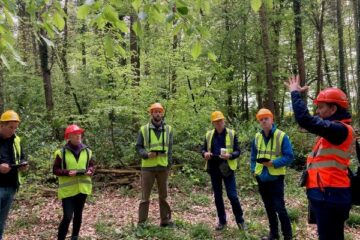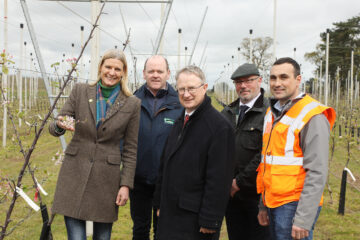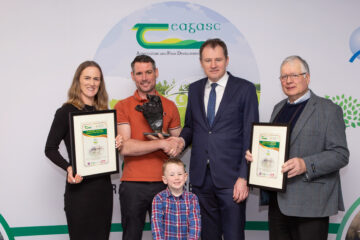The project, which will run until 2028, is primarily aimed at the delivery of environmental and social benefits for people and nature through the conservation and restoration of machair habitats and species. It will work on nine sites covering over 5,000 hectares along the western seaboard, from west Connemara in Galway, to South Mayo, Achill Island and the Erris region in northwest Mayo to north Donegal.
The project is led by the NPWS and co-funded by the European Commission’s LIFE fund. Three Associated Beneficiaries are involved in the project: the Department of Agriculture, Food and the Marine (DAFM), Teagasc and Fáilte Ireland.
Speaking at the launch, Minister of State for Heritage and Electoral Reform, Malcolm Noonan TD, said, “to ensure long-term success on complex environmental issues, we need to empower and incentivise communities to take action for nature and put them at the heart of the effort. I’m delighted that over 100 farmers have already signed up to take part in LIFE on Machair to restore these special coastal grasslands, which hold enormous biodiversity value. Collaborative approaches like these are the best way to deliver real and enduring results for nature that are good for people as well as wildlife.”
“On World Curlew Day, it is particularly welcome news that, through the project, participants will also support the protection of some of our most threatened wading birds, such as the Lapwing, Dunlin, Snipe and Redshank, which breed in these habitats, and of course, the much-loved Curlew, which is a winter visitor.
“I’d like to congratulate the project team on what promises to be a hugely impactful initiative for nature in this region, and also the participants, who are embarking on a journey as leaders in the national effort to restore nature. They should be heartily commended for their efforts.”
Minister of State Hackett highlighted the importance of the work already done by LIFE on Machair and other LIFE projects supported by DAFM, “LIFE on Machair is a fantastic project developed by the agencies responsible for farming, nature conservation and tourism to support rural communities which will deliver results for nature and biodiversity. The results based element is very key to the success of the project. Monitoring results helps farmers to really engage and deliver for their local ecosystem.”
“I was delighted to be in my home county of Mayo today with my colleague Minister Noonan, in particular on this 2023 World Curlew Day to see real community effort on biodiversity and farmland birds first hand. This is a great example of a systems approach to combining valuable outputs for farming and nature conservation, while leading the way to informing wider restoration projects. In particular, I am delighted to see that learning from the Great Yellow Bumblebee EIP have now been integrated to the LIFE on Machair project, highlighting the effectiveness of European Innovation Projects which I will continue to champion and fund.”
At the launch, Project Manager, Dr Catherine Farrell, underlined some of the challenges and opportunities for coastal communities and natural systems, “healthy ecosystems underpin healthy societies and communities. Nowhere is this more obvious than for the coastal communities of the northwest of Ireland. Here on western shores we find that daily life is intertwined with the ever-changing forces of the Atlantic. Change is inevitable, but as our farming and recreational practices have changed, this has impacted on the health of our coastal systems, rendering them less capable of buffeting the storms and weather patterns of our now changed climate.”
“This matters, as the resilience of natural systems is integral to protecting the coast where we live and work, but also in protecting the present and future livelihoods of those reliant on farming and tourism in Machair systems. This matters also, and significantly, for the breeding waders and pollinators of Machair systems, both groups with species that are threatened nationally and internationally. If we don’t act now, species such as Dunlin and the Great Yellow Bumblebee will succumb to local extinction. And at what cost?”
Source: Teagasc



